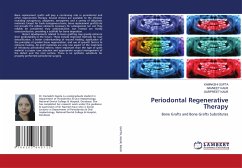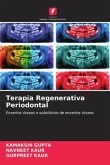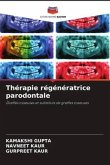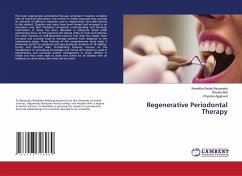Bone replacement grafts will play a continuing role in periodontal and other regenerative therapy. Several choices are available to the clinician including autogenous, allogeneic, xenogeneic and a variety of alloplastic materials. Except for fresh autogenous bone, bone replacement graft(s) do not provide the cellular elements necessary for osteogenesis nor can they reliably be considered truly osteoinductive, but instead are mostly osteoconductive, providing a scaffold for bone deposition. Recent developments related to bone grafting may greatly enhance their predictability in the future. These include improved methods for root detoxification, a better understanding of wound healing, application of the principles of guided tissue regeneration, and use of growth factors to enhance healing. All graft materials are only one aspect of the treatment of Infrabony periodontal defects. More important than the type of graft material is proper case selection and appropriate surgical management of the defect and the root surface. There is no synthetic substitute for properly performed periodontal surgery.
Bone replacement grafts will play a continuing role in periodontal and other regenerative therapy. Several choices are available to the clinician including autogenous, allogeneic, xenogeneic and a variety of alloplastic materials. Except for fresh autogenous bone, bone replacement graft(s) do not provide the cellular elements necessary for osteogenesis nor can they reliably be considered truly osteoinductive, but instead are mostly osteoconductive, providing a scaffold for bone deposition.
Recent developments related to bone grafting may greatly enhance their predictability in the future. These include improved methods for root detoxification, a better understanding of wound healing, application of the principles of guided tissue regeneration, and use of growth factors to enhance healing. All graft materials are only one aspect of the treatment of Infrabony periodontal defects. More important than the type of graft material is proper case selection and appropriate surgical management of the defect and the root surface. There is no synthetic substitute for properly performed periodontal surgery.
Hinweis: Dieser Artikel kann nur an eine deutsche Lieferadresse ausgeliefert werden.
Bone replacement grafts will play a continuing role in periodontal and other regenerative therapy. Several choices are available to the clinician including autogenous, allogeneic, xenogeneic and a variety of alloplastic materials. Except for fresh autogenous bone, bone replacement graft(s) do not provide the cellular elements necessary for osteogenesis nor can they reliably be considered truly osteoinductive, but instead are mostly osteoconductive, providing a scaffold for bone deposition.
Recent developments related to bone grafting may greatly enhance their predictability in the future. These include improved methods for root detoxification, a better understanding of wound healing, application of the principles of guided tissue regeneration, and use of growth factors to enhance healing. All graft materials are only one aspect of the treatment of Infrabony periodontal defects. More important than the type of graft material is proper case selection and appropriate surgical management of the defect and the root surface. There is no synthetic substitute for properly performed periodontal surgery.
Hinweis: Dieser Artikel kann nur an eine deutsche Lieferadresse ausgeliefert werden.








